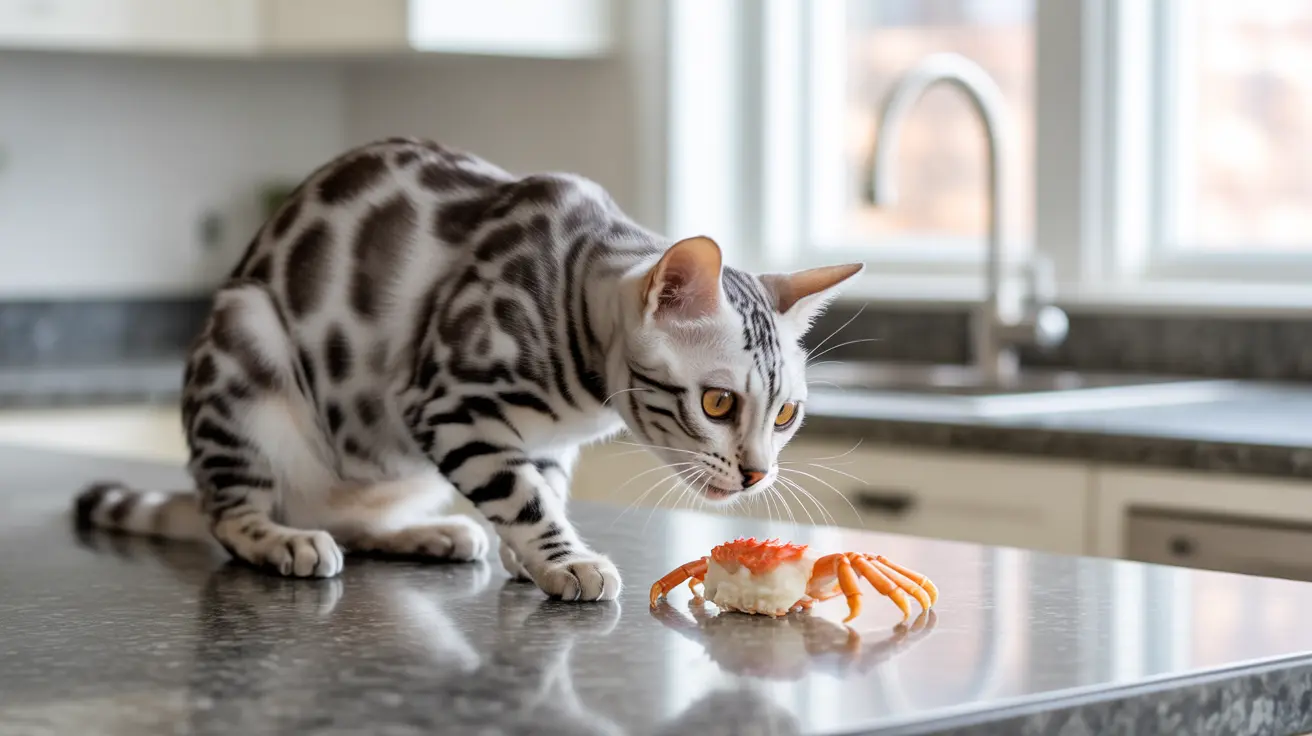Understanding Imitation Crab: What's Really in It?
Imitation crab, also known as crab stick or krab, isn't actually crab at all. It's made from surimi, a paste created from white-fleshed fish that's been processed, flavored, and colored to resemble real crab meat. This heavily processed food contains various additives, including:
- Starch and egg whites for texture
- Artificial and natural flavors
- Food coloring to achieve that signature pink hue
- Preservatives and stabilizers
- Added salt and sugar
Nutritional Concerns for Cats
Cats are obligate carnivores, meaning they require a diet primarily consisting of meat-based protein. Imitation crab presents several nutritional challenges:
Limited Nutritional Value
Unlike real crab meat, imitation crab offers minimal nutritional benefits for cats. It contains:
- Lower protein content than real crab
- High amounts of carbohydrates cats don't need
- Artificial additives that provide no nutritional value
- Excessive sodium levels that can be harmful
Health Risks and Safety Considerations
While not immediately toxic to cats, imitation crab comes with several potential health risks:
Sodium Content
The high sodium content in imitation crab can be particularly problematic for cats, especially those with existing health conditions like kidney disease or heart problems. Even healthy cats should avoid excessive salt intake.
Artificial Additives
The preservatives, colorings, and flavor enhancers in imitation crab could trigger allergic reactions or digestive issues in sensitive cats.
Safe Feeding Guidelines
If you decide to offer imitation crab to your cat, follow these important guidelines:
- Limit portions to tiny amounts (no more than a small nibble)
- Offer it rarely, if at all
- Always monitor your cat for adverse reactions
- Never make it a regular part of their diet
Better Alternatives for Your Cat
Instead of imitation crab, consider these healthier options:
- Small amounts of plain, cooked real crab meat
- Commercial cat treats formulated for feline nutrition
- Plain, cooked chicken or turkey pieces
- Fish-based cat food for seafood lovers
Frequently Asked Questions
Can cats safely eat imitation crab, and how often is it okay to give it as a treat?
While cats can technically eat small amounts of imitation crab, it should only be given as a very occasional treat, if at all. The high sodium content and artificial additives make it an unsuitable regular treat choice.
What are the main health risks of feeding imitation crab to cats?
The primary health risks include excessive sodium intake, potential allergic reactions to additives, digestive upset, and unnecessary carbohydrate consumption that isn't suited to feline dietary needs.
How should crab (real or imitation) be prepared before sharing it with a cat?
If offering either type, serve it plain, fully cooked, and in very small pieces. Avoid any seasonings, sauces, or additional ingredients. Real crab should be shell-free and thoroughly cooked.
Why is imitation crab nutritionally inferior to real crab for cats?
Imitation crab contains less protein, more carbohydrates, and artificial additives compared to real crab meat. It lacks the natural omega-3 fatty acids and high-quality protein found in genuine crab.
What signs of allergy or illness should I watch for if my cat eats imitation crab?
Monitor your cat for signs such as vomiting, diarrhea, itching, facial swelling, excessive drooling, or changes in behavior. If you notice any of these symptoms, discontinue feeding and consult your veterinarian.
Conclusion
While cats can have imitation crab in very small amounts, it's not recommended as a regular treat. The potential risks and lack of nutritional benefits make it a poor choice compared to other treat options. For the safety and health of your feline friend, stick to cat-appropriate treats or small amounts of plain, cooked real meat or fish instead.






